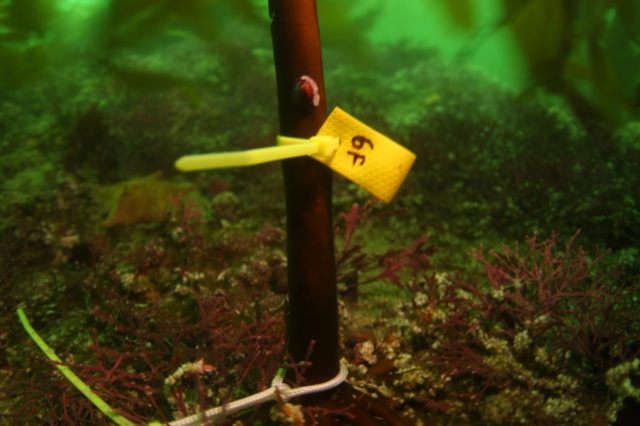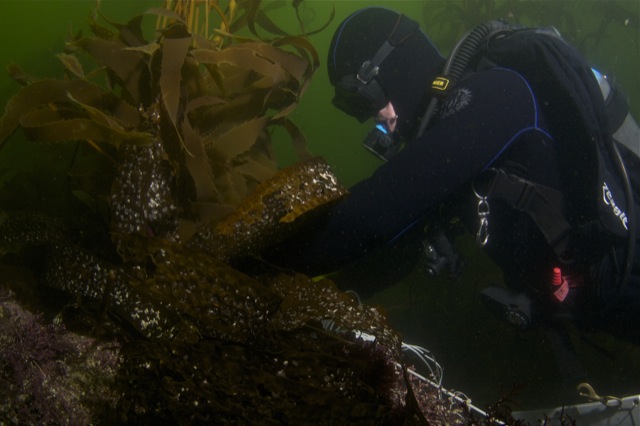BBC piece on glacial retreat with Dr. Iain Stewart. The Columbia Glacier in Alaska is breaking into the ocean 30 times faster than before (20 years ago).
The link is found here
BBC piece on glacial retreat with Dr. Iain Stewart. The Columbia Glacier in Alaska is breaking into the ocean 30 times faster than before (20 years ago).
The link is found here
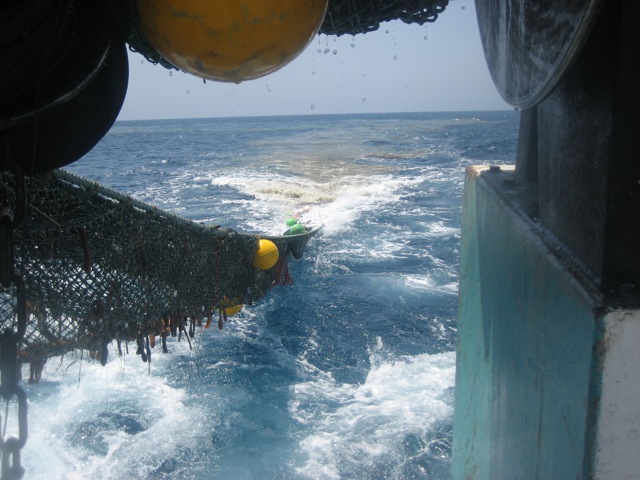
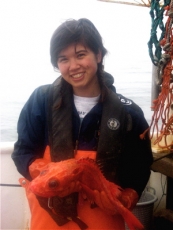
by Erin Loury, Ichthyology Lab
I’ll admit, the prospect of spending ten days at sea aboard a 60 foot fishing vessel to do a fish survey had me a bit nervous. The conditions in sunny southern California are nothing to rival the Bering Sea storms that Nate Jones blogged about – but even so, there can be tense moments. The day I have in mind was while we were trawling off the coast of San Diego. The continental shelf is very wide in this area, and we were miles from shore on the continental slope. With nothing but water all around us, we were reeling in our long net when suddenly it wouldn’t budge any further. We were stuck.
Our lead scientist and the fishing crew deliberated our choices. We could cut the net, which would involve a considerable loss of money, and any further sampling would literally be cut short. We’d have to return to port early, and our survey would be over. Or they could try to salvage the net, although how to do so without any help in over a thousand feet of water was beyond me. Unable to contribute any useful skills or advice to the situation, I curled up and took a nap. The crew later said they were impressed that I seemed unperturbed by the whole situation. But in reality, sleeping was my best way to avoid thinking of that fact that I was bobbing in a tiny boat effectively pinned to the bottom of the sea.
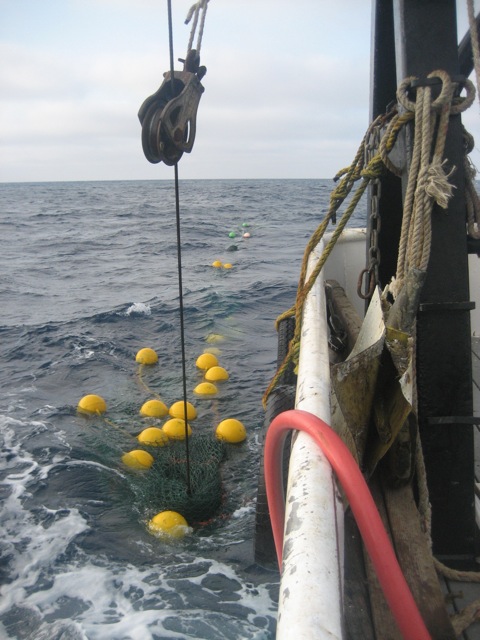
The crew’s strategy to free us from our deep-sea snare turned out to be straightforward: it involved letting out one side of the net, then reeling it in as they let the other side out. This alternating dance of pull and release essentially rocked the net back and forth, attempting to shake it from the grip of whatever underwater ledge or rocky outcrop had us snagged.
After about three tense hours, it worked. With a sigh of relief and a tinge of sadness, I welcomed our tattered net as it limped back to the surface, a messy tangle of floats and line. Once it was aboard, the crew set about mending the tear. I’m fascinated by the historic artistry involved in “sewing web,” as the mending of the net is called. I have to say I was not a quick study in the skill, but my fellow scientist Melanie was an old hand at it. Consider it just another a job hazard in the world of fishing.

Year old Steelhead (smolts) were seen during Moss Landing’s Scientific Diving class, in August, at Big Creek Reserve. These fish are anadromous, meaning they are born in freshwater and then spend most of their lives at sea before returning to the freshwater to breed. They get to experience both fresh and saltwater worlds!
Scientists have been studying the Axial Seamount for 13 years and predicted it would erupt before 2014. Check the video out here.
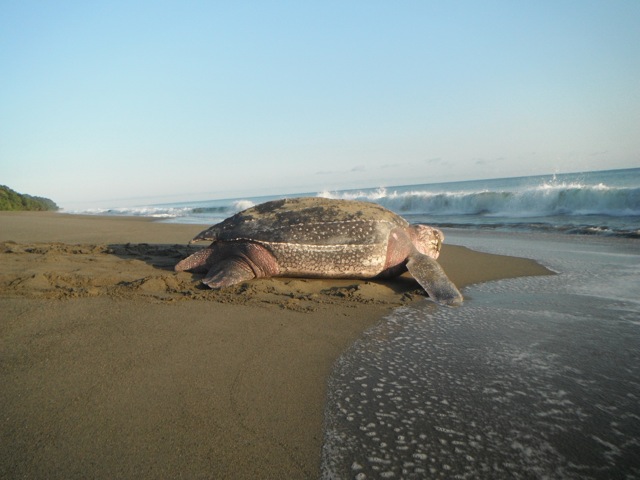

by Deasy Lontoh, Vetebrate Ecology Lab
Kamdo! That’s “Good day” in Abun, the language in this region of Indonesia.
The number of turtles coming up to nest is starting to go down, a sign that the nesting season is coming to an end. I met one big mama a couple of weeks ago that went back to sea after daybreak.
Staying healthy in the field is a real challenge. One of our crew members had to go back to the city to receive malaria care ten days ago, and he’s still not fully recovered yet. Another had a fever last night, and we’re still waiting to see if the fever is due to malaria or infection. Almost everyone I work with has had malaria. The symptoms include fever and body aches. They have to go back into the city to receive proper care, which is a half-day trip by a ship.
Infection usually starts with sandfly bites. Most people are allergic to them, including me, so every night I end up with about 20-30 very itchy welts. No kidding! I haven’t found a bug repellent that works. If I scratch them too hard, I’d end up nursing the scrapes for a few days. Cuts and scrapes heal slowly in this humid region. If my immune system is down, I may end up fighting infection.
Hard physical labor, lack of sleep, and limited diet are the reality here. We walk about 10 km a night on sand. Sleep during the day is difficult and often divided into two to three-hour chunks. We subsist on a mainly carb-based diet and canned meats because we have no means of refrigerating veggies and fruits. We do our best to make weekly trips into nearby villages to get veggies, but the amount doesn’t come close to the recommended daily servings. Besides collecting data, staying well definitely gets my full attention!
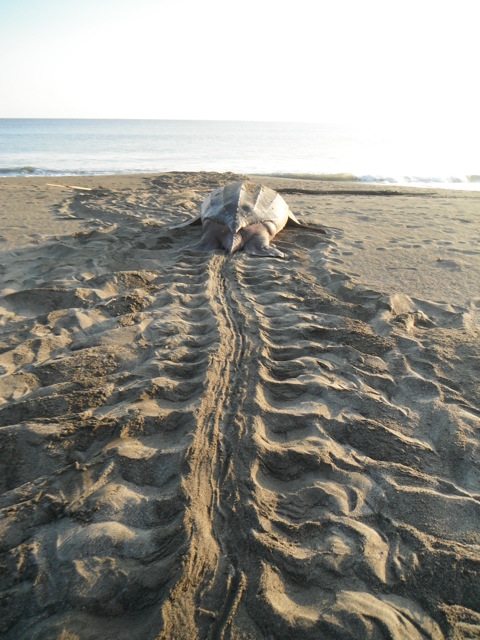
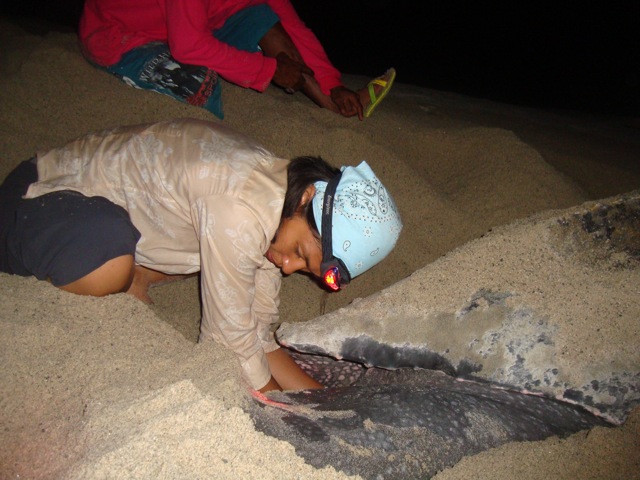
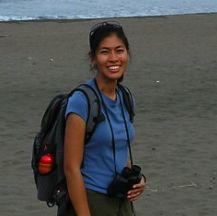
by Deasy Lontoh, Vertebrate Ecology Lab
Greetings from Papua! I’m back to study leatherback sea turtle reproduction for my thesis, this time for three and a half months. There are no hatcheries this year so I have to count turtle eggs as they are dropped into the nest while the females are laying.
When a female leatherback digs her nest, I dig a body pit for myself directly behind her. My body pit must be deep enough so I can comfortably place my hands underneath the female’s cloaca throughout the laying process. I tally the number of yolked and yolkless eggs in my head, and pass some eggs to a partner who measures and weighs them.
The eggs have to be returned into the nest before the female covers her nest, so we work very efficiently. Oftentimes the female drops more than one yolked egg at a time. Typically she drops the yolkless eggs at the end of the laying process, but sometimes she drops them at the same time as the yolked eggs. To keep the egg counts straight, my partner and I hardly talk to each other during sampling. It’s definitely a handful!
Read more about Deasy’s sea turtle work in Indonesia:
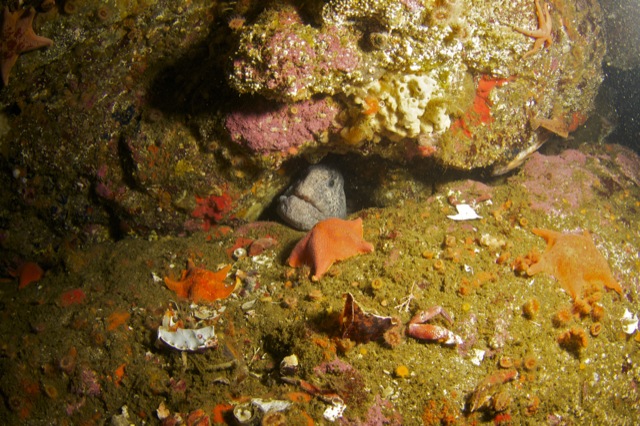
Checking in with Mr./Mrs. Eel, it appears the eel has been eating some delicious crab. This broken up crab carapace sits in front of the eel den, with some bat stars getting whatever is left over from the meal. The crab carapace is made of chitin, similar to keratin which makes up our nails and hair!
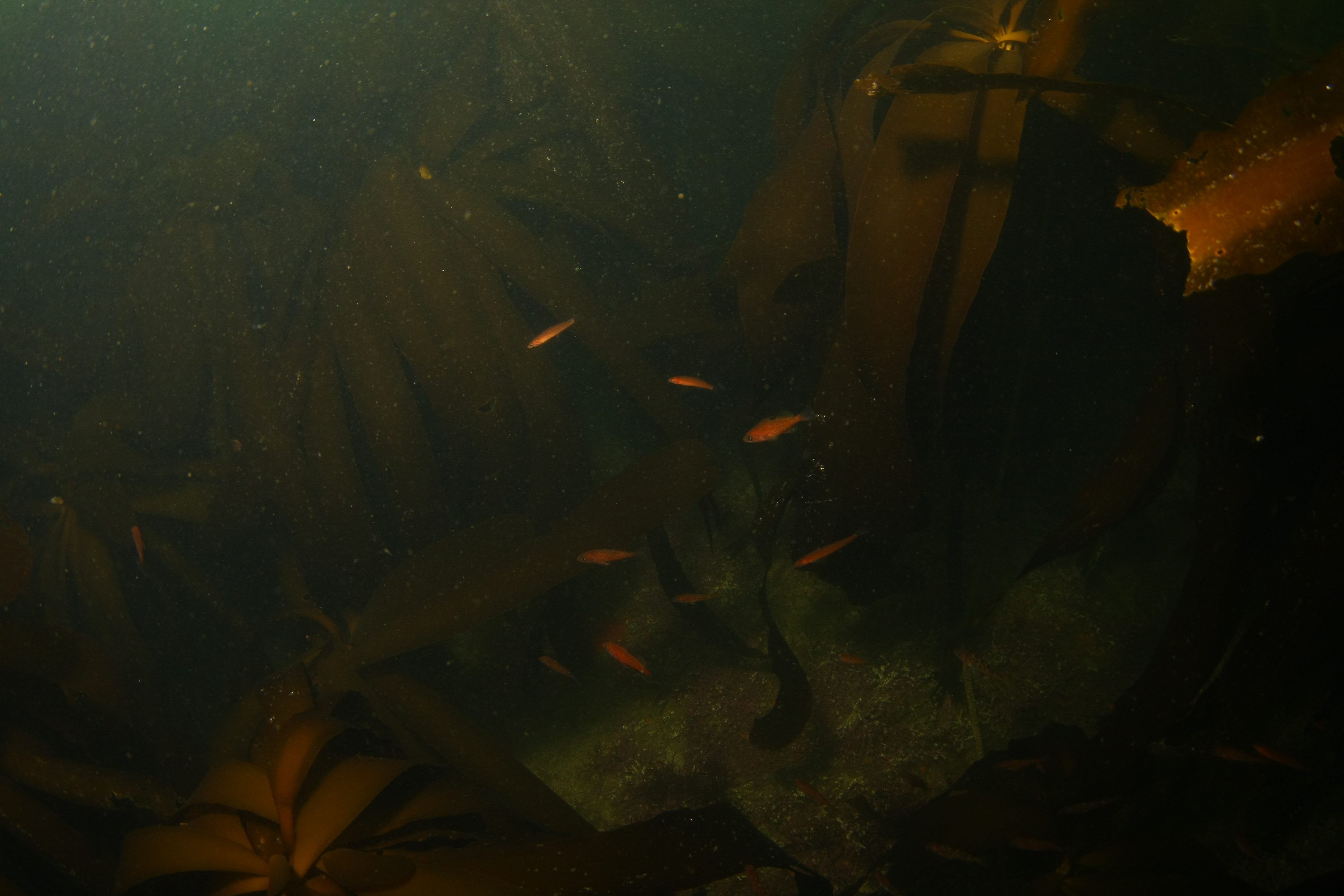
It appears to be a good year for rockfish as the young of the year (called YOYs) are swimming around. These fishes have survived the hardest part of their lives having been floating around as icthyo(fishy)-plankton and then recruiting to the kelp forest, however have much more to go. Some species are seen in the kelp canopy, you can barley make them out in the second photo.
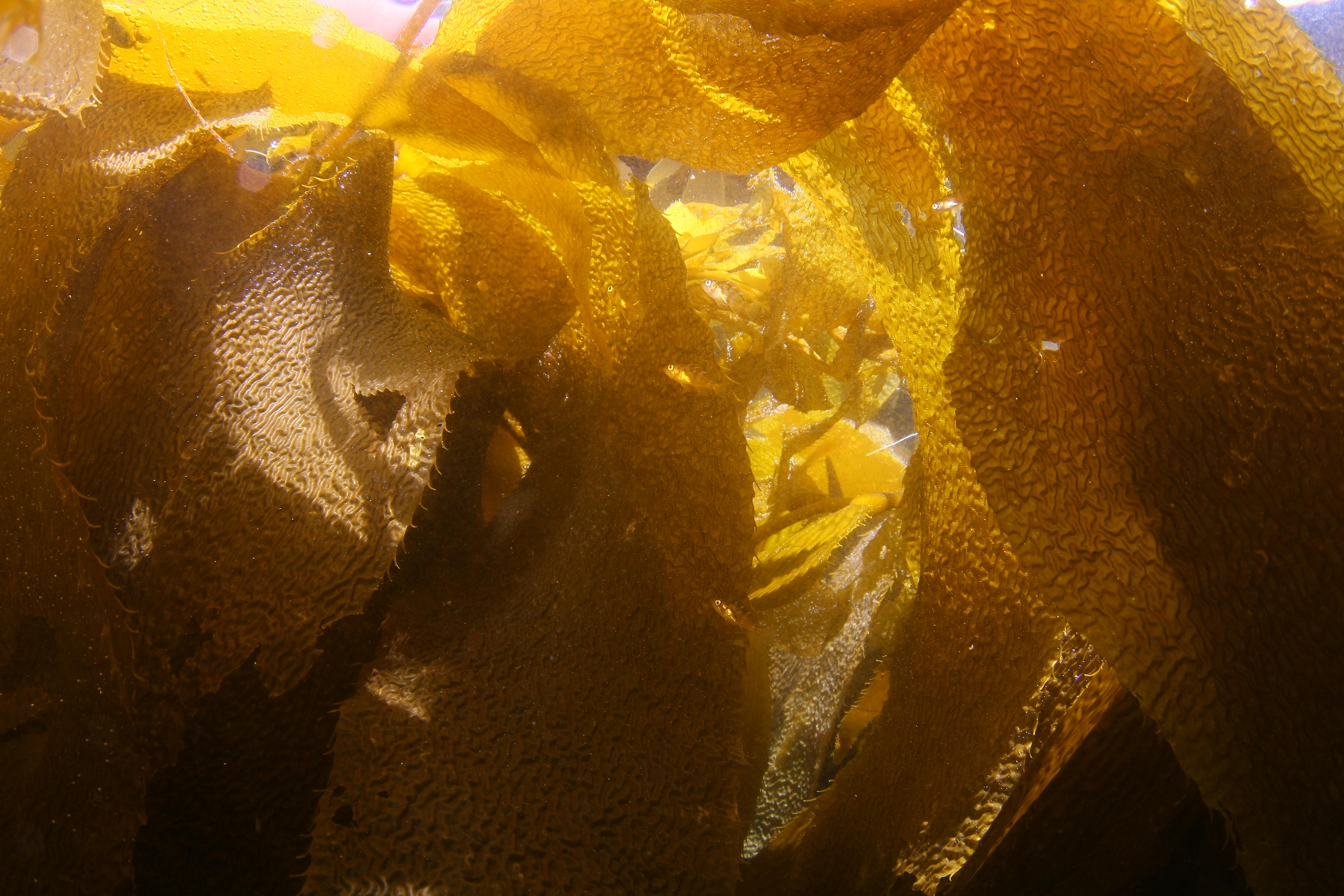

Without a doubt this eel is always present. I think I can rely on this more than most things in my life. They will choose a den and will only move if displaced by a larger eel or octopus. Wolf eels, Anarrhichthys ocellatus, eat hard-shelled invertebrates and fishes. Be careful, my shelled friends, these jaws can get cracking!
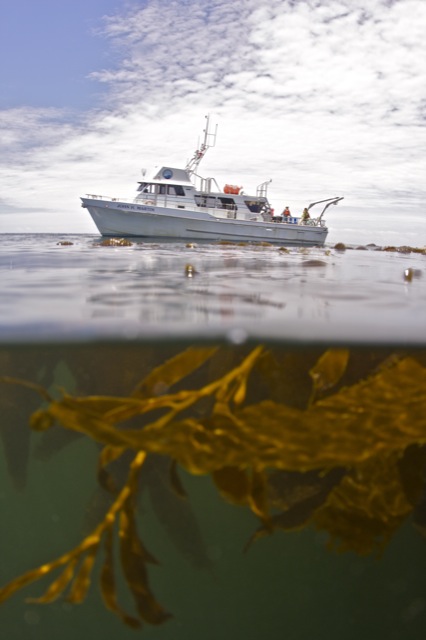
Stillwater Cove is one of the best studied kelp beds in the world. Moss Landing Marine Lab’s very own Mike Fox is studying giant kelp growth in Stillwater. The R/V John Martin took a group out to tag giant kelp in order to more easily locate them when they go reproductive. Large blades called sporophylls cover the holdfast and make it difficult to see the tags, so we attached white lines to a nearby winged kelp algae.
